Top 5 Cool Cultural Experiences in Kyoto’s Summer
- Kibune Kawadoko Dining – Enjoy riverside dining over a cool mountain stream
- Shōjū-in Wind Bell Festival – Hear 2,000 wind bells in a colorful temple garden
- Kamogawa Yuka Dining – Savor Kyoto cuisine on open-air terraces by the river
- Gozan no Okuribi – Watch giant bonfires light up Kyoto’s mountains
- Nanzen-ji Suirokaku Walk – Stroll under shady trees and a historic aqueduct

“Kyoto’s summer may be warm, but it’s full of quiet moments of beauty and calm. Shall we discover them together?”
- 1. Kibune Kawadoko Dining|A Taste of Summer Serenity Above the River
- 2. Shōjū-in Wind Bell Festival|Feel the Breeze and Harmony of Japanese Summer
- 3. Kamogawa Yuka Dining|Open-Air Summer Dining in the Heart of Kyoto
- 4. Gozan no Okuribi|Kyoto’s Sacred Fire Ceremony That Lights Up the Mountains
- 5. Nanzenji Temple’s Suirokaku Aqueduct|A Tranquil Temple Walk Among Cool Stones and Greenery
1. Kibune Kawadoko Dining|A Taste of Summer Serenity Above the River
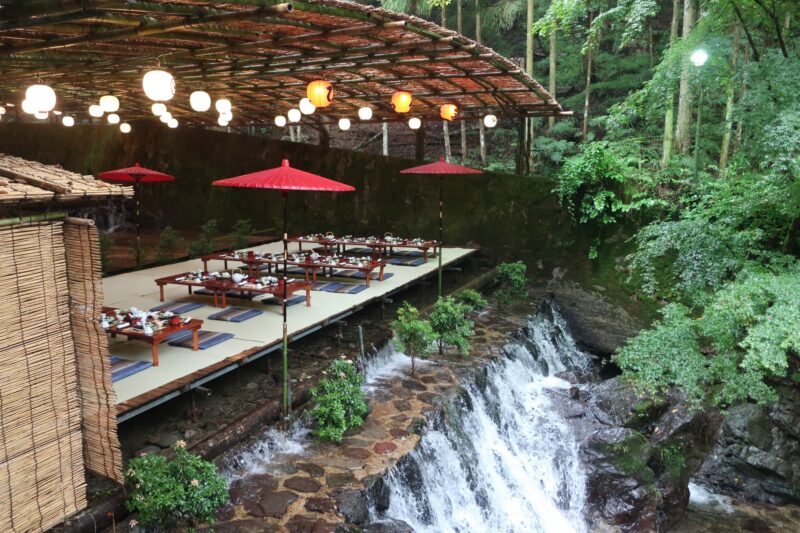
1-1. Experience Overview
A traditional summer dining experience over a flowing mountain stream in northern Kyoto.
- Location: Kibune area, Sakyo Ward, Kyoto
- Season: From May 1 to September 30, with peak season in July and August
- Hours: Typically 11:00 AM – 9:00 PM, varies by restaurant
- What it is: Open-air “kawadoko” dining decks built over the cool Kibune River
- Cuisine: Multi-course Kyoto-style kaiseki meals featuring seasonal ingredients
- Budget: ¥10,000–15,000 per person (lunch), ¥15,000–25,000 (dinner)
- Reservation: Highly recommended, especially for weekends and evenings
-
Official Website: Kibune Kawadoko Info.
1-2. Highlights & Cultural Significance
More than a meal—this is a centuries-old way to savor nature and tradition.
- Natural Air Conditioning: The temperature near the river can be 5–10°C cooler than central Kyoto
- Spiritual Roots: Located near Kifune Shrine, revered as the deity of water
- Heian-Era Origins: The tradition of escaping summer heat here dates back to the aristocracy of the Heian period
- Mindful Dining: Combines Japanese aesthetics, seasonal awareness, and gratitude for nature
- Scenic Value: Surrounded by lush forest and flowing water—ideal for photography and relaxation
1-3. Tips to Make the Most of It
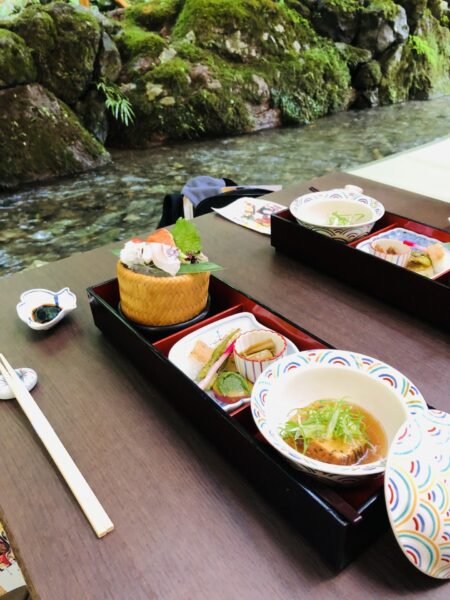
Plan ahead and savor every moment with these local tips.
- Reserve Early: Especially for July–August evenings (online or by phone)
- Arrive Early: Explore nearby Kifune Shrine or take a short forest walk
- Dress for Comfort: Light layers and comfortable shoes; cool nights are common
- Ask for Front Seats: Closer to the river, cooler and more scenic
- Combine with Eizan Railway: The scenic train ride to Kibune enhances the journey
2. Shōjū-in Wind Bell Festival|Feel the Breeze and Harmony of Japanese Summer
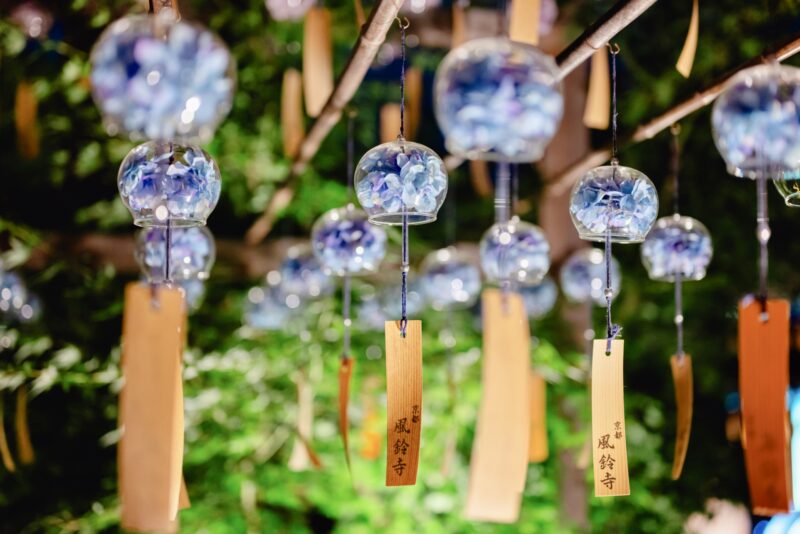
2-1. Event Overview
A colorful summer event featuring over 2,000 wind bells at a serene temple in rural Kyoto.
- Location: Shōjū-in Temple, Ujitawara Town, Kyoto Prefecture
- Season: Mid-June to Mid-September
- Hours: 9:00 AM – 4:30 PM (last entry at 4:00 PM)
- What it is: An annual summer festival where thousands of colorful “furin” (wind bells) hang across the temple grounds
- Special Features: The famous heart-shaped “Inome window,” calligraphy displays, and seasonal flowers
- Access: About 1 hour from central Kyoto by train and bus (not walkable)
- Admission: ¥700 for adults, ¥400 for children (as of 2025)
- Official Website: Shōjū-in Temple Official Website
2-2. Highlights & Cultural Significance
This peaceful temple brings together sound, nature, and spirituality in one gentle experience.
- 2,000 Wind Bells: Each bell carries a handwritten wish and creates a gentle sound in the breeze
- Sound as Coolness: In Japanese culture, the sound of wind chimes is believed to bring a psychological sense of coolness
- Spiritual Meaning: Wind bells are traditionally used to ward off evil and bring harmony to the soul
- Inome Window: A symbolic heart-shaped window believed to protect and bless visitors
- Temple Atmosphere: Surrounded by trees and seasonal flowers, the space is ideal for quiet reflection and seasonal photos
2-3. Tips to Make the Most of It
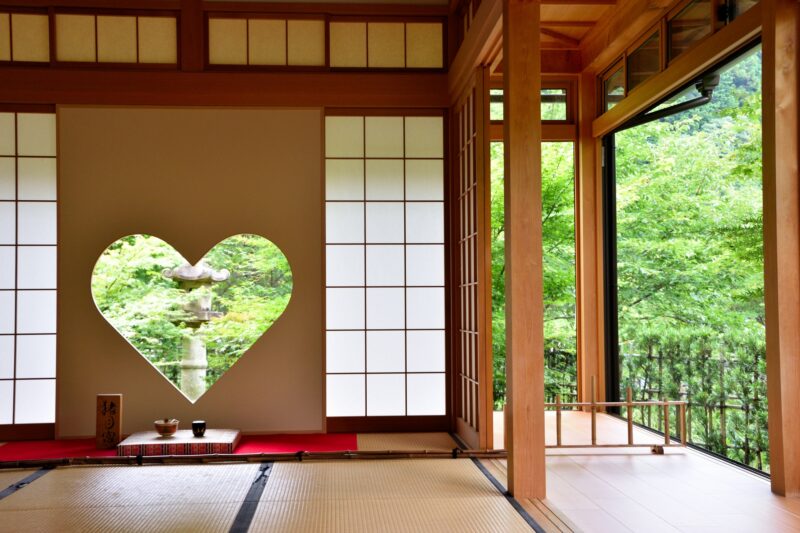
Make your visit peaceful, memorable, and photogenic with these tips.
- Go on Weekdays: Avoid crowds and enjoy a more tranquil experience
- Visit in the Morning: Best light for photographing the Inome window is before noon
- Pair with Uji: Combine your visit with nearby Uji for matcha sweets and scenic riverside views
- Wear a Yukata: A light summer kimono complements the colorful bells for beautiful photos
- Be Respectful: Entry fees support temple preservation—observe etiquette and take your time
3. Kamogawa Yuka Dining|Open-Air Summer Dining in the Heart of Kyoto
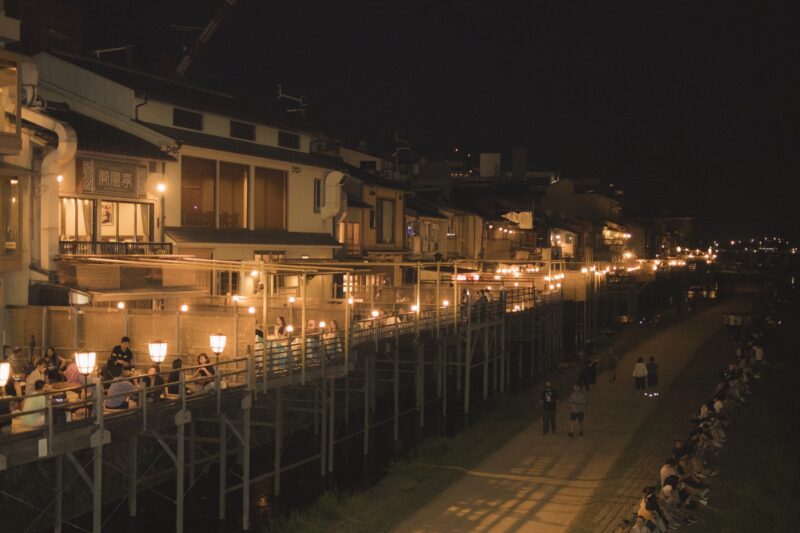
3-1. Experience Overview
A classic Kyoto tradition of dining on raised wooden terraces above the Kamo River, with a cooling breeze and scenic views.
- Location: Along the west bank of the Kamo River, between Nijo and Gojo Streets, Kyoto
- Season: May 1 to September 30 (peak season in July and August)
- Hours: Varies by restaurant; typically 5:00 PM – 10:00 PM for dinner
- What it is: Outdoor dining on temporary terraces (“yuka”) built over the riverbank
- Cuisine: Ranges from casual izakaya dishes to fine kaiseki meals
- Budget: ¥5,000–15,000 per person depending on the restaurant
- Reservation: Recommended for dinner, especially in peak season
- Official Guide: Kyoto Kamogawa Yuka Info
3-2. Highlights & Cultural Significance
More than just a meal—Kamogawa Yuka is a symbol of Kyoto’s summer hospitality.
- Breezy Atmosphere: Enjoy the evening breeze while dining just above the river
- Urban Meets Nature: Offers a rare mix of traditional architecture and modern city views
- Historical Roots: Dating back to the Edo period, yuka terraces have long been a symbol of summer leisure in Kyoto
- Local Pride: Popular among both tourists and locals, showing the seasonal spirit of the city
- Cultural Aesthetics: Emphasizes harmony with nature and the flow of time
3-3. Tips to Make the Most of It
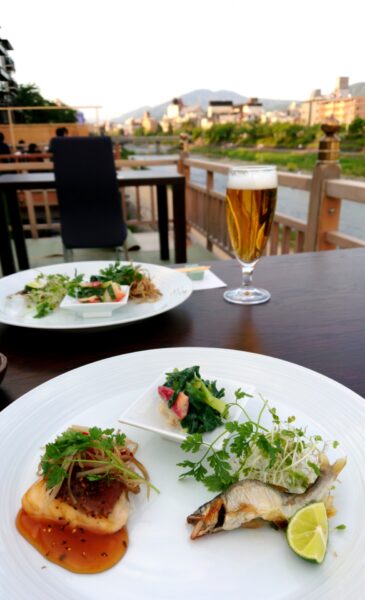
Make your riverside dining experience unforgettable with these helpful tips.
- Book a Riverside Seat: Request a table on the outer edge for the best view and breeze
- Arrive Before Sunset: Enjoy golden hour light and watch the city glow
- Try Local Sake: Many restaurants offer seasonal Kyoto-brewed sake or craft beer
- Check the Menu in Advance: Cuisine varies greatly—find one that fits your budget and taste
- Combine with a Stroll: Take a relaxing walk along the river before or after your meal

Kibune(1) feels like an escape into nature, while Kamogawa(3) lets you enjoy summer right in the city—both are beautiful in their own way.
| Aspect | 1 Kibune Kawadoko | 3 Kamogawa Yuka |
|---|---|---|
| Atmosphere | In the mountains, surrounded by forest and streams — a true escape | In the heart of the city, blending riverside charm with everyday life |
| Purpose | Summer retreat, nature immersion, slow-paced kaiseki dining | Casual dining, enjoying the evening breeze, a relaxing break during sightseeing |
| Food Style | Primarily kaiseki, higher price range | A wide variety of options, from casual to upscale |
| Accessibility | A bit remote (train + bus required) | Centrally located, easily walkable from many city areas |
4. Gozan no Okuribi|Kyoto’s Sacred Fire Ceremony That Lights Up the Mountains
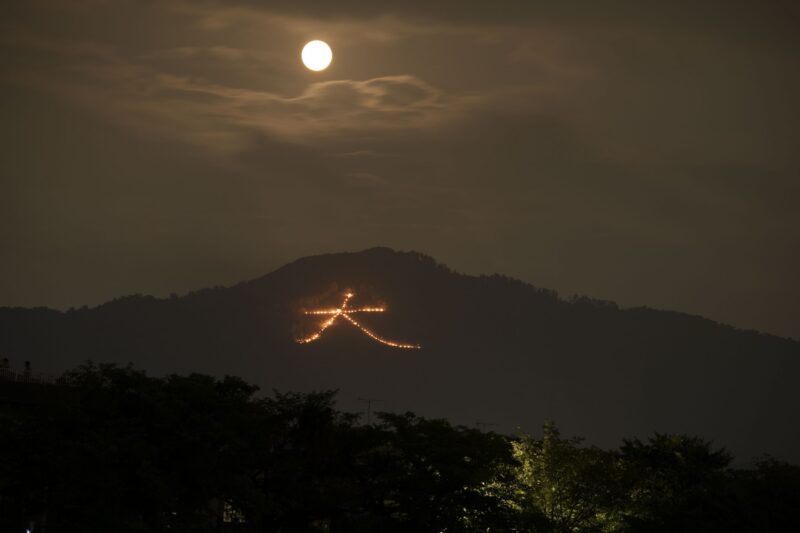
4-1. Event Overview
A powerful Buddhist fire ritual where giant burning characters appear on Kyoto’s mountains to send ancestral spirits back to the afterlife.
- Location: Five mountain sites across Kyoto City
- Date: Every year on August 16
- Time: 8:00 PM to around 8:50 PM (each mountain is lit in sequence)
- What it is: A centuries-old Obon event marking the return of ancestral spirits, symbolized by massive fire characters (“okuribi”) on mountain slopes
- Lighting Order & Shapes:
① Daimonji (大) – 8:00 PM
② Myoho (妙・法) – 8:05 PM
③ Funagata (舟形) – 8:10 PM
④ Hidari Daimonji (左大文字) – 8:15 PM
⑤ Toriigata (鳥居形) – 8:20 PM - Admission: Free (viewable from public areas)
- Access: Varies by location; most can be reached by Kyoto City Bus and short walks
- Official Website: No central official site, but Kyoto City Tourism provides updated information each year
| Fire Shapes Visible | Viewing Spot | Description | Map |
|---|---|---|---|
| “Myo” & “Ho” | Kyoto Institute of Technology Area | Wide, open view of both characters side by side from the east | 📍View on Map |
| “Dai”, “Hidari Dai”, “Funagata” | Kamogawa Riverside (Marutamachi–Imadegawa) | Best for multi-viewing with cityscape and quiet ambiance | 📍View on Map |
| Partial View (3 or more) | Funaokayama Park | Elevated view with potential visibility of multiple fire sites (trees may block view) | 📍View on Map |
| “Ho” Only | Kitayama Bridge (Takano River) | Clear line of sight to the “Ho” character over the river | 📍View on Map |
4-2. Highlights & Cultural Significance
Gozan no Okuribi is not just a visual spectacle—it’s a deeply spiritual farewell to ancestors and summer itself.
- A Ritual of Farewell: The fires mark the end of Obon, a Buddhist tradition where spirits of the deceased return to the afterlife
- Giant Characters in Flames: Each mountain displays a massive burning symbol, visible from many points across the city
- The Five Shapes: Each shape holds meaning—“Dai” (大) for greatness, “Myoho” (妙法) for Buddhist teachings, “Toriigata” (鳥居形) symbolizing passage between worlds
- A Quiet, Reflective Atmosphere: Unlike fireworks, this is a solemn and serene event—locals often watch in silence or with soft reverence
- Seasonal Closure: Gozan no Okuribi is said to quietly signal the end of Kyoto’s summer, turning attention toward the approaching autumn
4-3. Tips to Make the Most of It
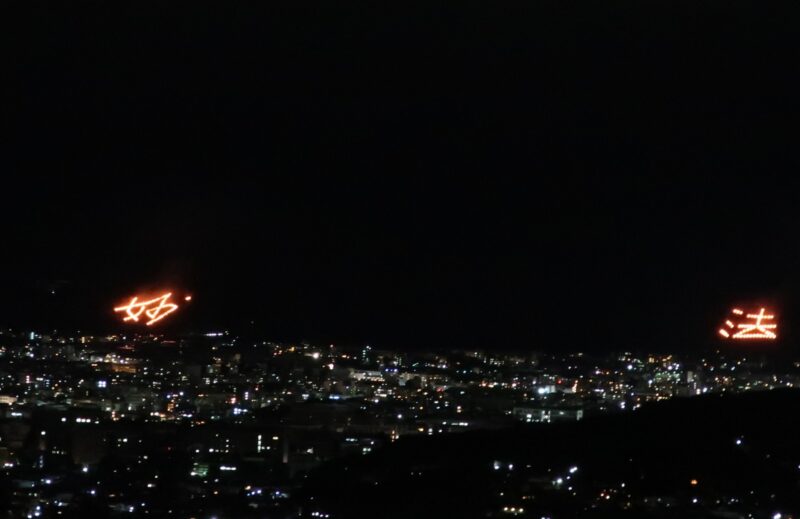
With a little planning, you can witness this magical moment in the perfect way.
- Arrive Early for the Best Spot: Popular locations along the Kamogawa River can get crowded by late afternoon
- Choose a Multi-Viewpoint Spot: Some areas, like the Marutamachi bridge, offer views of 2–3 fire shapes at once
- Use Public Transportation: Many roads are closed to cars on the night of the event—Kyoto City Bus and subway are best
- Keep Quiet and Observe Respectfully: Unlike summer festivals, Gozan no Okuribi is not for cheering—it’s a time for contemplation
- Dress for a Hot and Humid Evening: A lightweight yukata or breathable clothing is recommended, and don’t forget a fan or hand towel to stay cool.

Although Gozan no Okuribi feels like a farewell to summer, Kyoto’s August heat is still very real—stay hydrated and dress light!
5. Nanzenji Temple’s Suirokaku Aqueduct|A Tranquil Temple Walk Among Cool Stones and Greenery
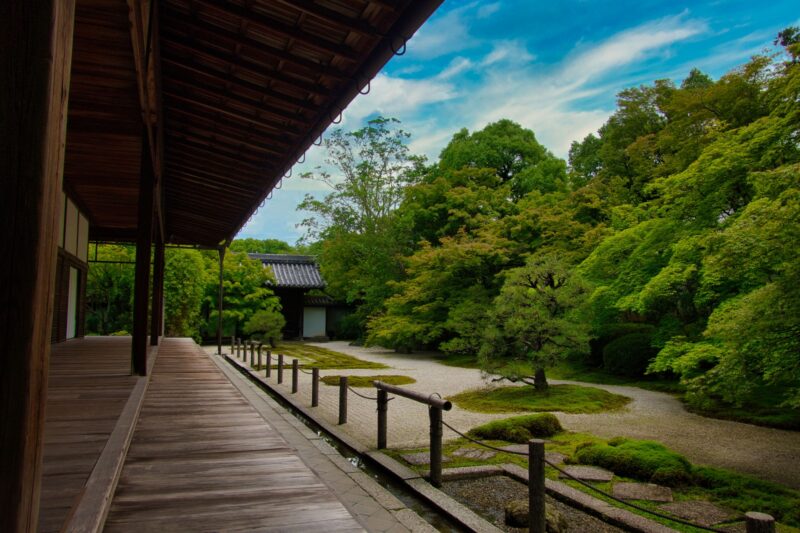
5-1. Experience Overview
- Location: Suirokaku Aqueduct at Nanzenji Temple (Sakyo Ward, Kyoto)
- Access: About 10-minute walk from Keage Station (Subway Tozai Line)
- Recommended Time: 30 minutes to 1 hour (walking & photos)
- Admission: Free (temple grounds open to public)
- Highlight: A red brick aqueduct from the Meiji Era blending harmoniously with a serene Zen temple
- What to Wear: Light, breathable clothing; shaded paths help, but bring a hat and water
5-2. Highlights & Cultural Significance
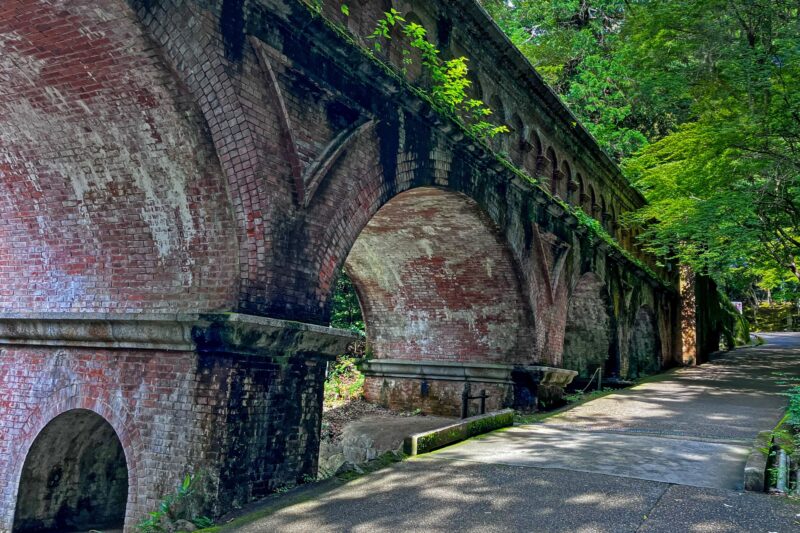
- Built in the Meiji Period as part of the Lake Biwa Canal, symbolizing Japan’s modernization
- A rare fusion of Western-style industrial architecture within a Zen Buddhist setting
- Surrounded by mossy stone paths, temple halls, and dappled sunlight—a naturally cool escape
- Featured in numerous films and dramas—popular among photographers and international visitors
5-3. Tips to Make the Most of It
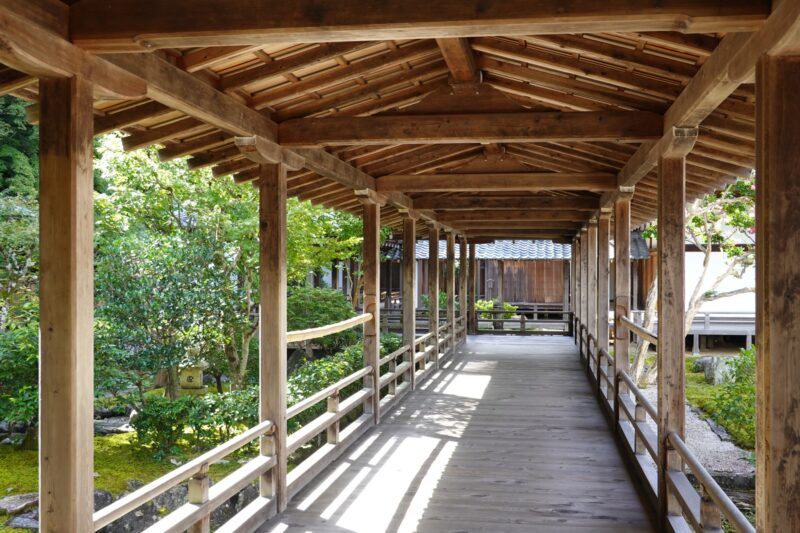
With a little planning, you can enjoy this peaceful temple walk at its most beautiful.
- Visit early in the morning for soft lighting and fewer crowds
- Combine with a stroll along the Philosopher’s Path for a peaceful walking route
- Don’t miss the photo spots under the arches or from the stone steps above
- Remember it’s a place of worship—move quietly and respectfully

It’s quiet here… but if you listen closely, the stones and water seem to whisper old stories.
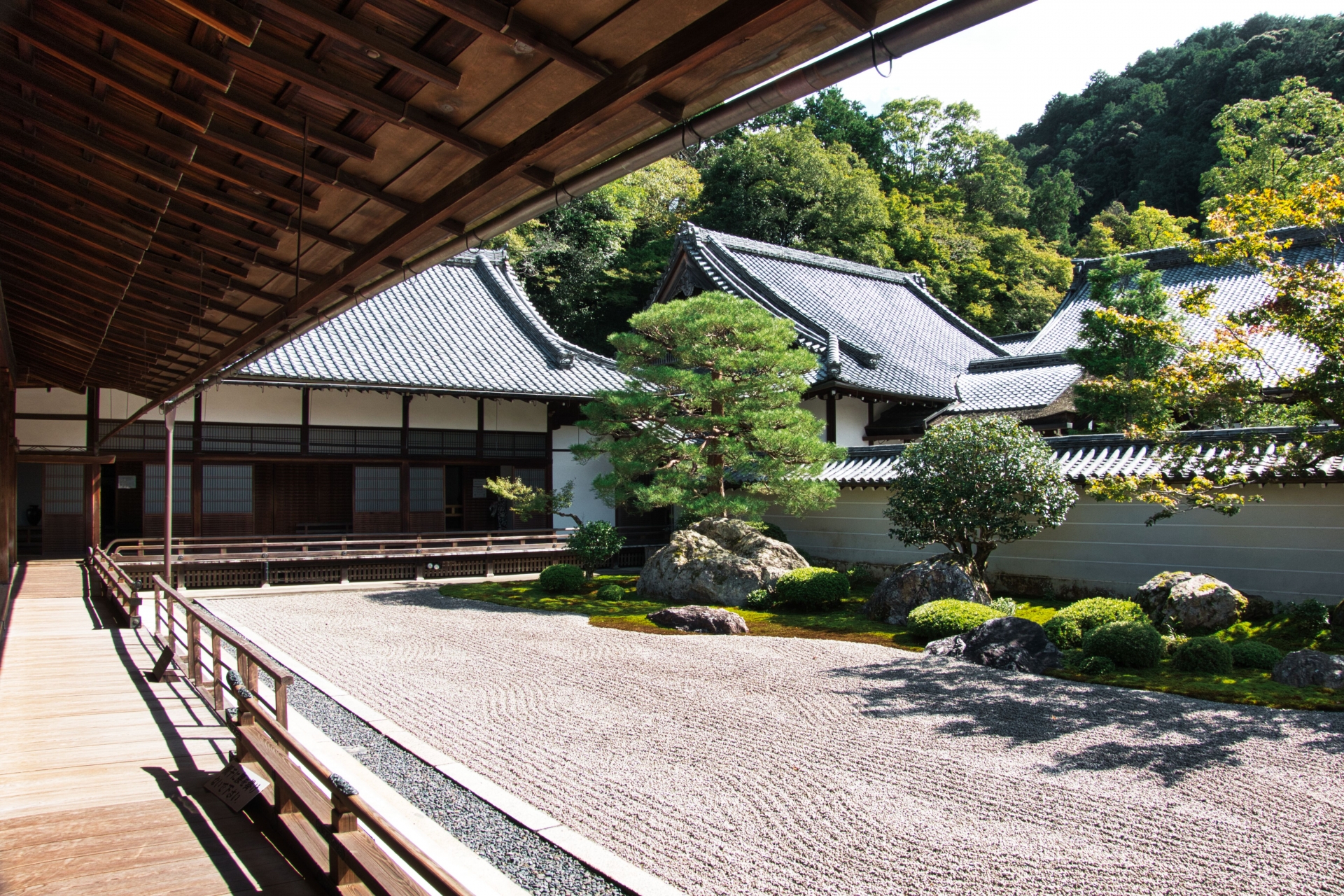

Comments